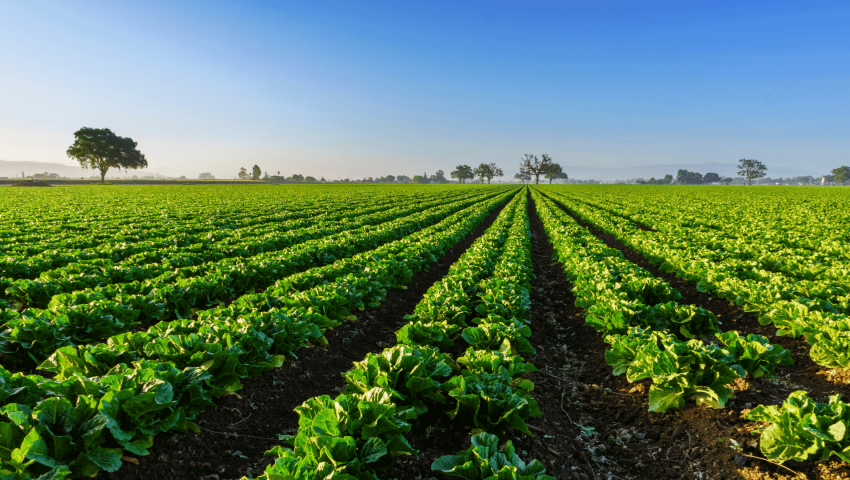
Adapting to Seasonal Workforce Needs in Australia
Explore effective strategies for managing seasonal workforce fluctuations in Australia's diverse agricultural sector. This comprehensive guide covers innovative recruitment techniques, retention strategies, and compliance considerations for farms and agribusinesses. Learn how to build a flexible, skilled workforce that can adapt to the changing demands of Australia's unique growing seasons.
“Successful seasonal workforce management in Australia isn't just about filling roles; it's about cultivating a resilient and adaptive labor ecosystem.”
Understanding Australia's Seasonal Workforce Landscape
Australia's agricultural sector faces unique challenges when it comes to managing seasonal workforce needs. The vast geography of the country, coupled with diverse climatic conditions, creates a complex tapestry of labor demands that vary significantly across regions and crop types.
One of the primary factors shaping the seasonal workforce landscape is the sheer diversity of agricultural production. From the tropical fruit orchards of Queensland to the wheat belts of Western Australia, each region has its own specific labor requirements dictated by growing seasons and harvest times. This diversity means that while one area may be experiencing peak labor demand, another might be in a lull, creating opportunities for worker mobility but also challenges in workforce planning.
The seasonality of agricultural work in Australia is further complicated by the country's position in the global market. Export-oriented crops, which form a significant part of Australia's agricultural output, must align their production and harvest schedules with international market demands, adding another layer of complexity to workforce management.
Climate change and extreme weather events are increasingly impacting seasonal workforce needs. Droughts, floods, and bushfires can dramatically alter labor requirements, sometimes at short notice, requiring a high degree of flexibility in workforce management strategies.
The composition of Australia's seasonal agricultural workforce is also unique. It typically includes a mix of local workers, interstate travelers, international backpackers on working holiday visas, and participants in specific agricultural visa programs like the Seasonal Worker Programme. Each of these worker categories comes with its own set of considerations in terms of recruitment, training, and retention.
Moreover, the COVID-19 pandemic has significantly disrupted traditional patterns of seasonal labor movement, particularly regarding international workers. This has forced many agricultural businesses to rethink their workforce strategies and explore new sources of labor.
Understanding this complex landscape is crucial for developing effective strategies to adapt to seasonal workforce needs. It requires a nuanced approach that takes into account regional variations, crop-specific requirements, and the broader economic and regulatory environment in which Australian agriculture operates.
Innovative Strategies for Seasonal Workforce Recruitment and Retention
Adapting to seasonal workforce needs in Australia requires innovative approaches to both recruitment and retention. Here are key strategies that agribusinesses can employ:
Develop a Diverse Talent Pool:
- Create partnerships with local schools and universities for internship programs.
- Engage with retired or semi-retired individuals looking for seasonal work.
- Tap into urban populations seeking short-term rural experiences.
Leverage Technology for Recruitment:
- Utilize social media and targeted online advertising to reach potential workers.
- Implement AI-driven matching algorithms to connect workers with suitable positions.
- Develop user-friendly mobile apps for easy job applications and communication.
Create Attractive Work Packages:
- Offer competitive wages and consider performance-based bonuses.
- Provide comprehensive training programs that enhance workers' skills.
- Include unique perks like local experiences or eco-tourism opportunities.
Implement Flexible Work Arrangements:
- Offer job-sharing options to accommodate workers who can't commit to full seasons.
- Develop rotational programs allowing workers to experience different roles or locations.
- Consider remote work options for certain positions to attract a wider talent pool.
Build a Strong Employer Brand:
- Showcase your farm's commitment to worker well-being and sustainability.
- Share success stories and testimonials from previous seasonal workers.
- Engage in community events to build a positive local reputation.
Develop Retention Strategies:
- Implement a 'returnee' bonus program for workers who come back each season.
- Create off-season engagement programs to maintain connections with workers.
- Offer career progression opportunities for high-performing seasonal workers.
Enhance Worker Experience:
- Provide quality accommodation and recreational facilities.
- Organize social events and cultural experiences for workers.
- Establish mentorship programs pairing experienced workers with newcomers.
Utilize Labor Mobility Programs:
- Participate in government initiatives that facilitate worker movement between regions.
- Collaborate with other farms to share workers during different peak seasons.
- Develop your own inter-regional worker exchange program.
Invest in Training and Skill Development:
- Offer pre-season training programs to prepare workers for specific roles.
- Provide opportunities for workers to gain formal qualifications or certifications.
- Implement cross-training to create a more versatile workforce.
Embrace Cultural Diversity:
- Provide language support and cultural integration programs for international workers.
- Celebrate cultural diversity through events and inclusive practices.
- Offer mentorship opportunities that pair local and international workers.
By implementing these strategies, agribusinesses can create a more robust and adaptable seasonal workforce, better equipped to meet the changing demands of Australian agriculture.
Navigating Compliance and Ethical Considerations in Seasonal Workforce Management
Managing a seasonal workforce in Australia comes with a unique set of compliance and ethical considerations. Navigating these effectively is crucial for the sustainability and reputation of agricultural businesses.
Visa Compliance:
- Stay updated on changes to agricultural visa programs, such as the Working Holiday Maker and Seasonal Worker Programme.
- Implement robust systems to verify work rights and visa conditions.
- Provide clear information to workers about their visa obligations and restrictions.
Fair Work Compliance:
- Ensure adherence to relevant awards and pay rates, including piece rates where applicable.
- Maintain accurate time and attendance records for all workers.
- Provide clear, written employment agreements in workers' native languages.
Occupational Health and Safety:
- Conduct thorough safety inductions for all seasonal workers.
- Provide appropriate personal protective equipment and training on its use.
- Implement heat stress management protocols for workers in hot climates.
Accommodation Standards:
- Ensure all worker accommodation meets or exceeds legal standards.
- Regularly inspect and maintain accommodation facilities.
- Provide clear information about accommodation costs and conditions.
Ethical Recruitment Practices:
- Work only with licensed labor hire providers who adhere to ethical recruitment standards.
- Prohibit workers from paying recruitment fees.
- Implement transparent recruitment processes free from discrimination.
Cultural Sensitivity:
- Provide cultural awareness training for supervisors and permanent staff.
- Respect religious and cultural practices of diverse worker groups.
- Offer multilingual support services for non-English speaking workers.
- Worker Welfare:
- Establish clear grievance mechanisms accessible to all workers.
- Provide access to mental health support, particularly for isolated workers.
- Ensure workers have access to adequate healthcare services.
- Environmental Compliance:
- Train workers on environmentally sustainable farming practices.
- Ensure proper handling and disposal of agricultural chemicals.
- Implement water conservation measures and educate workers about their importance.
Data Protection:
- Safeguard workers' personal information in compliance with privacy laws.
- Implement secure systems for storing and transferring worker data.
- Provide clear information to workers about how their data is used and protected.
Continuous Improvement:
- Regularly audit compliance practices and address any identified issues promptly.
- Stay informed about industry best practices and emerging ethical standards.
- Engage with industry bodies and regulators to contribute to policy development.
By prioritizing compliance and ethical considerations, agribusinesses can not only avoid legal issues but also build a reputation as responsible employers, enhancing their ability to attract and retain quality seasonal workers.

MYHRLINK's Seasonal Workforce Management Solutions
MYHRLINK offers comprehensive solutions for managing seasonal workforce needs in Australian agriculture. From recruitment to compliance, we help you navigate the complexities of seasonal labor.
- Tailored Recruitment
- Compliance Management
- Worker Support
Adapting to seasonal workforce needs in Australia's agricultural sector is a complex but crucial task. As we've explored, it requires a multifaceted approach that encompasses innovative recruitment strategies, robust retention methods, and a strong commitment to compliance and ethical practices.
The key to success lies in flexibility and forward-thinking. Agricultural businesses must be prepared to adapt their workforce strategies to changing conditions, whether they stem from climate variability, market fluctuations, or regulatory changes. This adaptability is not just about reacting to immediate needs but about building a resilient labor ecosystem that can withstand and thrive amidst uncertainty.
Technology plays an increasingly important role in this adaptation process. From AI-driven recruitment tools to digital compliance management systems, embracing technological solutions can significantly enhance the efficiency and effectiveness of seasonal workforce management.
Moreover, the importance of building strong relationships – with workers, local communities, and other stakeholders in the agricultural sector – cannot be overstated. These relationships form the foundation of a sustainable approach to seasonal workforce management, facilitating worker retention, knowledge sharing, and community support.
As the Australian agricultural sector continues to evolve, so too must our approaches to managing seasonal workforce needs. This evolution will likely involve greater collaboration between farms, increased use of data analytics for workforce planning, and potentially, new models of work that blur the lines between seasonal and permanent employment.
Ultimately, successful adaptation to seasonal workforce needs is not just about meeting immediate labor requirements. It's about cultivating a workforce management approach that supports the long-term sustainability and success of Australian agriculture. By prioritizing worker welfare, embracing innovation, and maintaining a steadfast commitment to ethical practices, agricultural businesses can build a seasonal workforce that is not only productive but also resilient, engaged, and aligned with the values of modern, sustainable agriculture.

